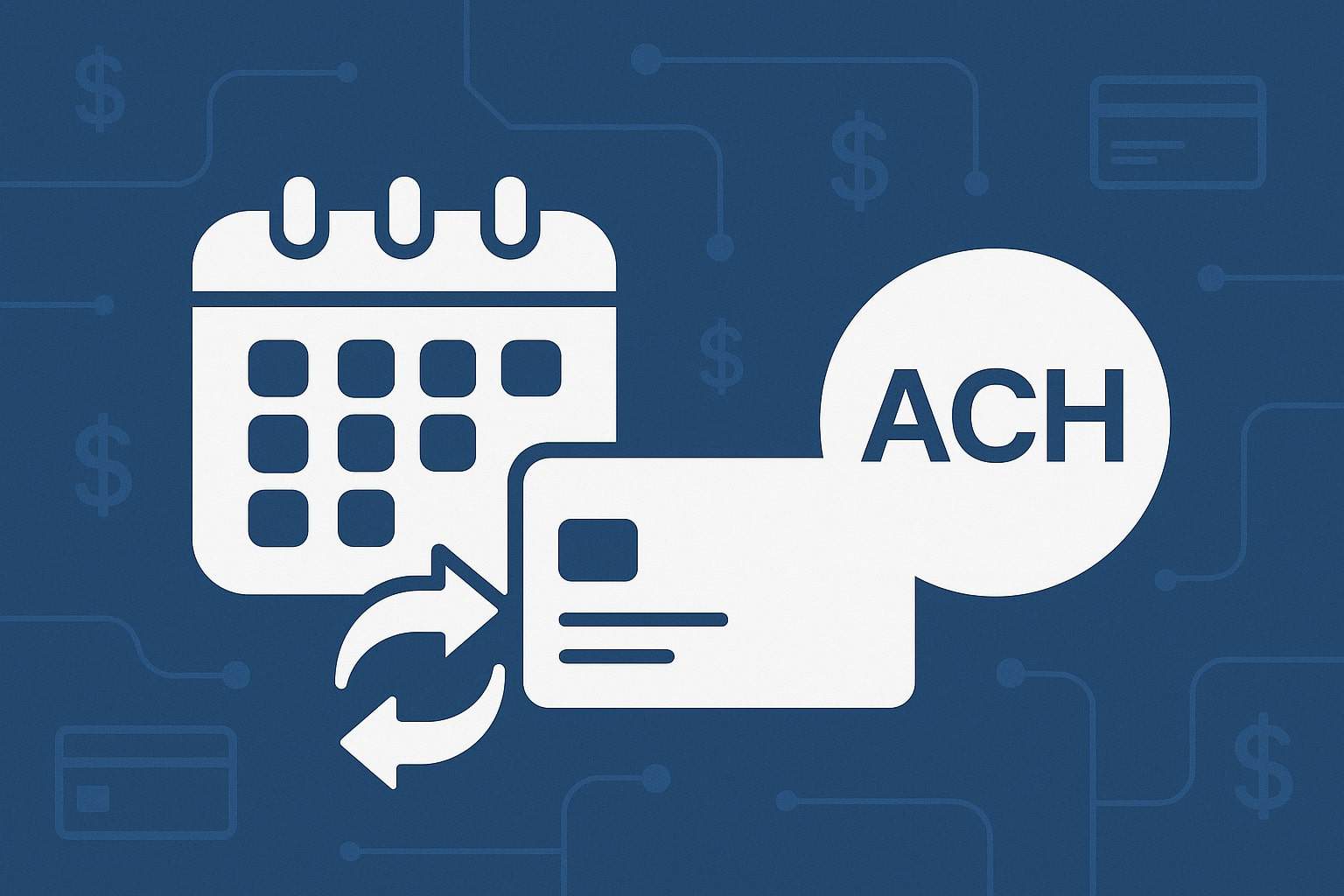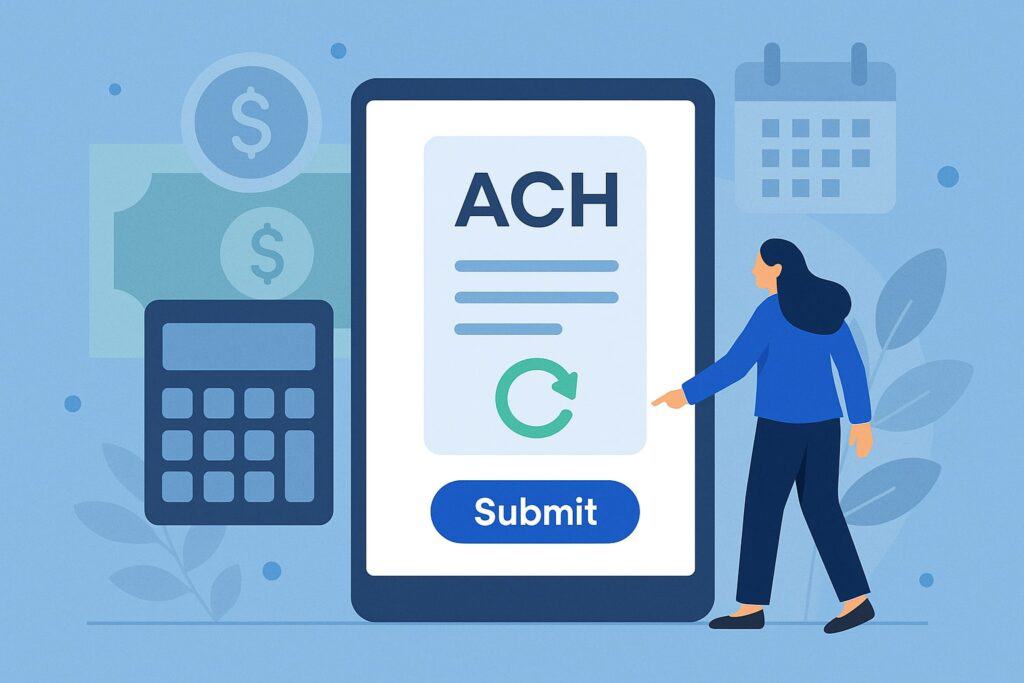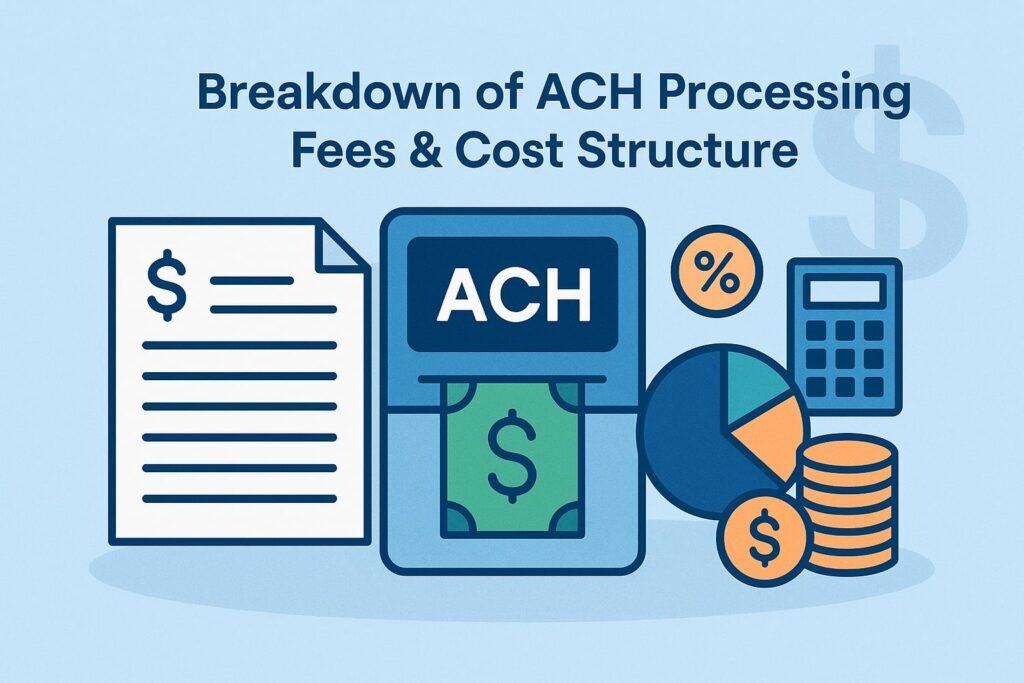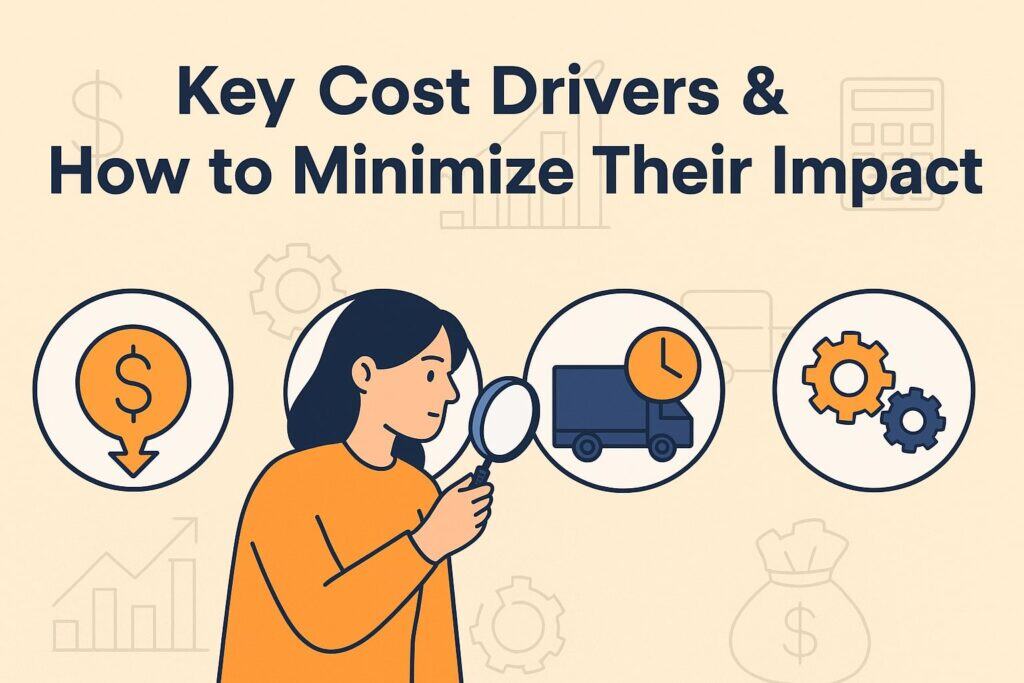
By alphacardprocess October 10, 2025
Recurring billing via ACH (Automated Clearing House) is one of the most cost-efficient ways for businesses to collect regular payments (subscriptions, memberships, service fees). But “cost-efficient” does not mean “cost-free.”
There are many nuances around ACH processing fees, chargebacks, return fees, timing, and how to negotiate or structure your setup to minimize those costs. In this article, we’ll cover:
- What recurring ACH billing is and how it works
- The typical fees and cost structure
- Key cost drivers and “hidden” fees
- Strategies, best practices, and technical tweaks to reduce costs
- Comparisons with other payment methods
- FAQs and concluding recommendations
Let’s dive in.
What Is Recurring ACH Billing and Why Use It?

Recurring ACH billing refers to the authorization and automated withdrawal of funds from a customer’s bank account at regular intervals (weekly, monthly, quarterly, annually, or some custom cadence).
Instead of the customer manually paying each time, the business issues an ACH debit (pull) transaction to collect payment automatically, based on a previously agreed mandate.
How Recurring ACH Works
- Authorization / Mandate Setup: Before you can debit someone’s bank account automatically, you need authorization — often called a mandate or ACH authorization form.
This may be collected electronically (via e-signature) or on paper, specifying the bank account, routing number, amount, billing frequency, and terms (e.g. ability to cancel). - Payment Schedule / Tokenization: Once authorized, you schedule future payments (for example, the 15th of every month). Your system stores the account info (often via tokenization / secure vaulting) to send in each batch.
- Batching & File Submission: On each billing cycle (or multiple cycles), your system compiles ACH transactions into a batch file (formatted per NACHA / your payment processor). That file is submitted to your ACH processor or bank.
- Clearing / Settlement: The ACH network processes the batch, debits the customer accounts, and credits your business bank account (minus processing fees). Funds typically take 1–3 business days to settle (though Same-Day ACH may speed it up).
- Returns, Adjustments, and Reconciliation: Some transactions may be returned (insufficient funds, closed account, invalid account, etc.). You must handle those via return codes, customer notification, and sometimes retry logic or collections.
Because recurring payments are automated, they reduce administrative overhead, minimize missed or late payments, and give predictable revenue streams (cash flow forecasting becomes easier). Many subscription businesses, utilities, gyms, SaaS companies, and nonprofits rely on recurring ACH billing for these benefits.
Why Recurring ACH Usually Costs Less Than Alternatives
- Lower per-transaction fees: ACH transactions are generally charged with low flat fees (or low percentage fees), significantly lower than credit card fees (which often run 1.5 % – 3.5 % plus a fixed cents component).
- Batch processing efficiencies: ACH transactions are grouped in batches, allowing fixed costs (file transmission, network usage) to be spread among many transactions.
- Fewer intermediary fees: You avoid card network interchange and assessing fees inherent to credit card rails.
- Predictability: Because ACH costs tend to be flat or with capped percentages, forecasting costs is easier.
- Lower risk of chargebacks: While ACH does have returns and disputes, they tend to be less frequent or lower cost (if properly managed) compared to credit card chargebacks.
Given all that, recurring ACH billing is often a compelling option for subscription businesses or those with steady payment streams.
Breakdown of ACH Processing Fees & Cost Structure

To save on ACH fees, you must understand all the moving parts. Here’s a detailed breakdown of the typical fees and cost structure associated with ACH, especially in a recurring billing environment.
Flat / Per-Transaction Fees
Many ACH processors charge a flat, per-transaction fee (regardless of amount). That might range from $0.10 to $1.50 (or more) depending on volume, risk, or processor. For example, a medium-volume business might pay $0.25–$0.50 per ACH debit. Some processors combine a flat fee plus a small percentage (e.g. $0.20 + 0.5 %).
Percentage / Discount Fee
In some higher-risk cases or for smaller transactions, processors may impose a percentage fee (sometimes termed a “discount fee”). This is less common for low-risk recurring payments, but not unheard of. Typical ranges might be in the ballpark of 0.5% to 1.5% of the amount.
Monthly / Account Fees
To maintain the ACH service, many providers charge a monthly account fee or “maintenance fee” (for access, reporting, security, compliance). That might range from $5 to $30 or more, depending on the provider’s features.
Batch / File Fees
Since ACH works in batches, some processors charge a batch fee (i.e. per file submitted). This is often under $1 per batch but can add up if you submit many small batches.
Return / NSF Fees
When a transaction fails (non-sufficient funds, closed account, invalid account, etc.), it’s returned. Processors typically apply a return fee of $2 to $5 per transaction.
Chargeback / Reversal Fees
While less frequent in ACH than in card processing, you may face chargeback / reversal fees (when customers dispute or claim unauthorized withdrawals). These can run $5 to $25 or more per instance.
High-Ticket / Surcharge Fees
Some providers apply a surcharge on large transactions (for example, above $5,000 or $10,000) to mitigate risk. That might mean a higher flat fee or additional percentage.
Expedited / Same-Day ACH Fees
If you need faster settlement (Same-Day ACH), processors may charge extra. That might be an added flat fee or a premium (e.g. +$0.50 to $1 per transaction, or a higher percentage).
Hidden or Indirect Fees
There are additional “hidden” or less obvious cost factors such as:
- Setup / Onboarding fees
- Minimum monthly usage fees (if you don’t reach a certain volume)
- Compliance / risk premiums (if your industry is seen as high risk)
- Fraud protection / monitoring fees
- Window / cutoff scheduling penalties (missing submission windows may require you to pay a premium)
Understanding all of these components is essential, because even a small fee here or there can erode margins across thousands of recurring transactions.
Key Cost Drivers & How to Minimize Their Impact

To reduce ACH fees in recurring billing, you need to identify what drives your costs, and then apply strategies to mitigate each. Below are the primary cost drivers and how to address them.
1. Transaction Volume & Negotiation Leverage
Driver: Low volume often means paying higher per-transaction fees because processors don’t get economies of scale.
Mitigation: As your volume grows, you can renegotiate rates. Use your historical transaction data (volume, reliability, return rates) to demonstrate lower risk. Many processors offer volume discounts or tiered pricing as you cross thresholds.
2. Batch Size & Frequency
Driver: If you submit many small batches (e.g. weekly or daily), you incur more batch fees and cannot spread fixed costs widely.
Mitigation: Consolidate payments into fewer, larger batches (e.g. once daily or bi-daily). This lowers batch overhead. Also ensure you submit before cutoffs so you don’t incur expedited charges.
3. Return / Decline Rate
Driver: High return/NSF rates cause fees and wasted effort.
Mitigation: Employ account validation (micro-deposits, pre-authorization checks), monitoring, and retry logic to reduce returns. Also maintain good address and account data hygiene. Some processors allow you to flag “likely returns” and avoid them or route them differently.
4. Chargebacks / Disputes
Driver: Disputes cost more than routine returns.
Mitigation: Make the authorization and billing terms clear to customers. Ensure your descriptors (how your business name appears on bank statements) are recognizable. Offer easy customer support and dispute resolution internally to avoid chargebacks.
5. Same-Day ACH Usage
Driver: Using Same-Day ACH for many transactions can raise your cost.
Mitigation: Only use Same-Day ACH when truly necessary (urgent collections). Default to standard ACH for most recurring payments unless urgency justifies the premium.
6. Processor / Bank Markups
Driver: Some processors pay fees, especially for high-risk industries.
Mitigation: Shop around. Compare providers’ fee schedules, hidden markups, and contract clauses. Ask for “all in” pricing (i.e., total cost including returns and volume discounts).
7. Industry Risk & Business Classification
Driver: Businesses in certain sectors (e.g. telecom, debt collection, adult services) may be categorized as high risk and charged premium fees.
Mitigation: Present strong compliance, low disputes, positive customer history, and fraud controls to reduce perceived risk. If necessary, choose a processor specialized in your industry to get better rates.
8. Transaction Sizes / High-Ticket Surcharges
Driver: Large one-time or periodic transactions may attract surcharges.
Mitigation: Where possible, break large payments into installments that stay under the surcharge threshold. Or negotiate custom pricing for high-ticket clients.
9. Hidden / Compliance Costs
Driver: Miscellaneous fees, unexpectedly applied compliance fees, or penalties for contract breaches.
Mitigation: Read your contract carefully. Ask for detailed disclosure of all fee types. Negotiate out unnecessary line items. Monitor monthly statements for surprise charges.
Steps & Best Practices to Implement Low-Cost Recurring ACH
Putting theory into practice, here are concrete, actionable best practices you can adopt when launching or optimizing recurring ACH billing to keep processing fees minimal and operations smooth.
Use a Robust ACH / Payment Platform or Gateway
Rather than building your own solution from scratch, select an ACH processor or gateway with:
- Clear and transparent pricing
- Support for recurring billing, batching, retry logic
- Account validation (micro-deposits or pre-checks)
- Easy reporting, dashboards, and analytics
- Strong dispute / return management tools
Examples (for U.S. merchants) include Stripe ACH, GoCardless, or other ACH-capable gateways.
Tokenization & Secure Vaulting
Store bank account details securely (tokenized) instead of re-submitting full account numbers each cycle. This reduces risk and may reduce fraud-related costs.
Pre-Validation / Account Verification
Before performing real debits, validate accounts with micro-deposits or validate via third-party services. Filtering out invalid accounts reduces return fees.
Retry Logic & Smart Retry Scheduling
When a transaction fails, don’t immediately give up. Retry intelligently based on codes (e.g. retry after a few days). Some processors support “automatic retry” features.
Customer Communication & Descriptor Clarity
Notify customers ahead of the debit date, send reminders, and clearly identify how your business name will appear on their bank statements. Reducing confusion leads to fewer disputes and chargebacks.
Tiered Billing / Split Payments
For high-value clients, consider splitting a large amount into multiple smaller debits (within acceptable contract limits) to avoid high-ticket surcharges.
Prioritize Standard ACH, Limit Same-Day Use
Unless absolutely necessary, stick to standard ACH schedules. Use Same-Day ACH only when it justifies the incremental cost.
Negotiate with Providers
Use your volume data & low dispute rate to renegotiate lower per-transaction or monthly rates. Ask for waivers or reductions of batch fees, return fees, etc.
Monitor Performance Metrics
Regularly track metrics such as return rate, average transaction size, failure reasons, dispute rate, batch sizes, and cost per transaction. Use that data to refine your setup.
Use Cutoff and Timing Strategically
Submit ACH files before bank/processor cutoff times to avoid forced delays or overnight / expedited charges.
Compliance & NACHA Rules
Ensure you comply with NACHA rules (for U.S. ACH), maintain proper authorization records, follow return-handling rules, and keep audit trails. Noncompliance can result in fines or increased fees.
Plan for Declines / Grace Periods
Some customers may not have funds on a given debit day. Having a grace period or fallback collection methods (e.g. invoice, credit card fallback) helps reduce churn or lost payments.
By combining these practices, you can significantly reduce return, dispute, and excess fee costs, while maintaining a healthy recurring billing system.
Comparative Cost Analysis: ACH vs Other Payment Methods
It’s useful to compare recurring ACH billing with other methods such as credit cards, wire transfers, checks, etc., to understand savings and trade-offs.
ACH vs Credit Cards / Debit Cards
- Fee structure: Credit card networks charge interchange fees plus network assessments (often 1.5% to 3.5% + flat cents). ACH typically charges flat per transaction or lower percentage.
- Chargebacks: Credit card chargebacks are more frequent and expensive; with ACH the return / dispute process is more restricted.
- Settlement / processing time: Cards are often real-time or near real-time; ACH takes 1–3 business days (or same-day).
- Risk & fraud: Cards have more rules and dispute complexity, but fraud risk is higher. ACH is relatively low-risk if done correctly.
- Customer willingness: Some customers prefer paying by card (rewards, convenience), so offering both may be beneficial.
ACH vs Wire Transfers
- Cost: Wire transfers cost $15–$50 or more per transaction. ACH is much lower cost per transaction.
- Speed: Wires are faster (often same day), ACH is slower (unless same-day ACH).
- Use case: Wires are ideal for one-time, high-value transfers; ACH is better for recurring, moderate-value payments.
ACH vs Paper Checks
- Cost & overhead: Paper checks incur printing, postage, manual handling, error rates—often $2–$4 per check. ACH is far cheaper.
- Settlement delay / risk: Mailing checks are slow and error-prone; ACH is faster and automated.
ACH vs Other Electronic Payments / eChecks
- Some systems (eChecks, EFT) function similarly to ACH but may impose extra fees or different rails. Always check cost and reliability.
In summary: for recurring billing, ACH often offers the best balance of cost, reliability, and automation—especially when properly optimized.
Implementing Recurring ACH in International / Non-U.S. Markets
While “ACH” is a U.S.-centric term tied to the NACHA network, many countries have equivalent ACH-type systems (e.g. EFT in Canada, Bacs in the UK, SEPA Direct Debit in Europe). The principles and cost-optimization strategies below apply broadly, albeit with local adjustments.
Recognize Local ACH Analogues
- Understand the local direct debit network (settlement cycles, rules, liability).
- Know fee norms in your region (flat, percentage, return fees).
Currency / Cross-Border Challenges
If you’re billing customers in foreign currencies, you’ll incur FX conversion spreads and possibly intermediary fees. Negotiating multi-currency settlement options or using local direct debit rails can reduce costs.
Local Compliance & Mandate Rules
Different countries have distinct rules for direct-debit authorizations, cancellation rights, and return/dispute protocols. Ensure you have local legal and compliance support.
Local Process Optimization
Apply the same principles: batch optimization, validation, retries, communication, negotiation with processor, and monitoring of declines/returns.
Although the network varies, the mindset of minimizing cost drivers carries over.
FAQs (Frequently Asked Questions)
Below are common questions and concise, actionable answers about recurring ACH billing and how to save on processing fees.
Q1: What’s a typical ACH processing fee for recurring payments?
A: For many U.S. ACH processors rates are in the band of $0.20 to $1.50 per transaction, often around $0.25–$0.50 for recurring debits. Plus you may incur monthly fees, batch fees, return fees, etc.
Q2: Can ACH fees be negotiated?
A: Yes. If you can present solid volume, low return/dispute history, and consistent revenue, many processors will lower per-transaction rates, waive certain fees, or offer tiered discounts.
Q3: How much does Same-Day ACH cost extra?
A: That depends per provider, but a premium is typical (e.g. an extra $0.25–$0.75 or a higher percentage). Use it sparingly only when necessary.
Q4: What is the cost of returns or NSF failures?
A: Return/NSF fees often run $2 to $5 per instance. Some processors may charge more for certain return types.
Q5: How do I reduce chargebacks / disputes?
A: Use clear communication, recognizable statement descriptors, easy support and refund processes, and ensure proper authorization.
Q6: Is ACH recurring billing secure?
A: Yes, when implemented well. Use encryption, secure tokenization, proper authorization, and compliance with applicable rules (e.g. NACHA).
Q7: What if a customer cancels after I already initiated a debit?
A: You’ll need policies in place for reversals or refunds, and comply with return/dispute rules. Some processors allow reversals within certain windows.
Q8: Are there free ACH processing options?
A: Truly free ACH for commercial recurring billing is rare. Some banks may offer ACH transfers free for internal account transfers or as part of bundled services, but often with limits. Always read the fine print.
Q9: Can I combine ACH with credit card fallback?
A: Yes—some systems allow a fallback to credit cards if ACH fails. But do so carefully, because credit card fees are higher, and you want to avoid defeating the purpose.
Q10: How to decide when to upgrade to a better processor?
A: Once your savings from reduced fees exceed the cost or switching effort, or when your current provider limits your scale, it’s time to move.
Conclusion
Recurring billing via ACH offers one of the most compelling cost-efficient and automated mechanisms for businesses needing to collect regular payments. But “cost-efficient” does not mean “free”—unless you optimize.
Here is a recap of the key takeaways and a roadmap to saving on ACH processing fees in recurring billing:
- Understand the components of ACH cost: per-transaction fees, batch fees, return/chargeback fees, monthly fees, surcharges, etc.
- Identify the key cost drivers (volume, returns, batch structure, same-day usage, risk classification) and put mitigations in place.
- Use best practices: validation/pre-checks, tokenization, batching, retry logic, clear communication, descriptor clarity, limiting unnecessary same-day ACH, and continuous performance monitoring.
- Negotiate smartly with your processor: use your volume, reliability, and low decline metrics to push for better terms.
- Compare ACH to alternative methods (credit cards, wire, checks) to justify your choice and possibly supplement fallback options.
- If you operate internationally, adapt these principles to your local direct debit / ACH equivalent systems.
By systematically examining each cost component, setting up technical and procedural safeguards, and continuously monitoring performance, many businesses reduce their ACH-related processing costs by 30% to 50% (or more) while improving reliability.